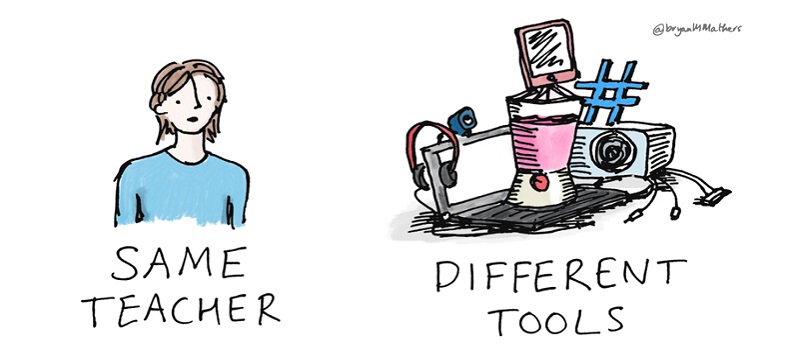1.2 Making use of asynchronous and synchronous online teaching opportunities
Throughout this course you’ll be introduced to research papers relating to the topics discussed. The first such paper, by Murphy, Rodriguez-Manzanares and Barbour (2011), reports on interviews with 42 Canadian high school distance education teachers regarding their views on synchronous and asynchronous online teaching activities. The authors found that:
- The teachers used different combinations of synchronous and asynchronous online teaching. Some taught entirely asynchronously. Others combined asynchronous teaching with synchronous forms such as scheduled classes or times where they would be available for tutoring and responding to students.
- All those interviewed made some use of asynchronous online teaching, such as providing learning materials for students to work through in their own time, use of online quizzes, or supporting students to ask a question via email or forums and receive a response at a later time.
- Teachers suggested that asynchronous and text forms of communication were preferred by many students. One suggested that it was rare for students to request voice chat rather than text communications, another noted that students could email to ask multiple questions and the teacher could then take some time to construct a response.
- There were also perceived advantages to synchronous modes of communication. Some teachers felt that addressing a particular problem or query raised by a student would be best achieved through videoconferencing or the use of a shared online whiteboard. It was also felt that opportunities for synchronous online teaching could help the students to feel less isolated, because they could include time for socialising and informal discussion.
Activity 1 Thinking about synchronous and asynchronous online teaching
Having read this section and the vignette about Dr. Myo Aung’s experiences, think about how synchronous and asynchronous modes of online teaching could be applied to your work.
Try to come up with three short examples that fit the following situations. These could be based on your own experiences of teaching or learning, or a situation that you can imagine:
- A situation where synchronous learning is appropriate and beneficial in supporting learning.
- A situation where asynchronous learning is appropriate and beneficial in supporting learning.
- A situation that combines synchronous and asynchronous learning to support learning.
Discussion
This activity is designed to help you begin to think about online teaching in your own context. One of the very first considerations in taking teaching online is to decide which elements lend themselves to synchronous learning, asynchronous learning, or both.
The study by Murphy, Rodriguez-Manzanares and Barbour (2011) was conducted in a particular context: High school distance education. Some of the findings may hold true for you, but they may not be universally applicable to all students in all courses.
It could be helpful to think about the practical issues, the preferences, and the benefits in your own case. For example, there could be very good practical reasons for using an asynchronous approach with your students, such as the expectations that learners will be engaging at different times. But it might be that a synchronous mode of instruction is beneficial because it offers a more immediate chance to understand and address queries. Preferences might vary and could be gathered from students if there is uncertainty about the best approach. Some students may like the way a synchronous discussion allows you to create a sense of community and engagement. Others may prefer the slower pace of an asynchronous activity where they can craft a question or response in their own time and reflect on it before sharing with others.
It is often sensible to make use of both forms of teaching to provide a range of experiences and opportunities for learning.
1.1 Teacher reflections
